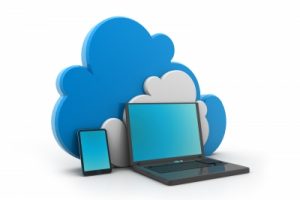
Planning a move to the cloud – Tips, tricks and risks to consider as well as tools that are available to help
 With cloud computing becoming more widely utilized, it is important for organizations to understand the best ways to maximize benefits and minimize risks of a move to the cloud. The transition to the cloud is not one to be taken lightly. There is no doubt that organizations have great benefits for moving to the cloud, but the planning and processes involved in transitioning from an established infrastructure to a cloud environment is a major commitment.
With cloud computing becoming more widely utilized, it is important for organizations to understand the best ways to maximize benefits and minimize risks of a move to the cloud. The transition to the cloud is not one to be taken lightly. There is no doubt that organizations have great benefits for moving to the cloud, but the planning and processes involved in transitioning from an established infrastructure to a cloud environment is a major commitment.
What are the most important decisions IT departments face in today’s cloud world? It’s not whether to leverage the cloud or to build a private cloud or even which cloud services to use. The most important decision is which applications to place in the cloud. Clearly, the best place to start is with new applications targeting customers, partners and employees. The challenge is what to do with existing applications.
The following article will underline the best options available on the market for cloud migration, and will provide some useful tips and tricks on gathering the relevant information every IT manager or CIO needs to make the right decisions.
The challenges of cloud migration
While a move to cloud computing can bring huge operational and financial rewards, it’s a complex and challenging decision that requires careful planning and some deep thought about what priorities and objectives. First, you need to understand the various cloud configurations:
- Public cloud – Applications and/or data are stored on shared servers at third-party providers that supply cloud solutions to many clients, such as Oracle On Demand Cloud Services
- Private cloud – A cloud infrastructure operated only for an individual organization. It may be managed by the organization or a third party and may exist on premises or off premises
- Community cloud – Several organizations (like a hospital and local medical practices) share a dedicated cloud. They can freely exchange data among themselves while keeping it secure from the outside world
- Hybrid cloud – A cloud infrastructure composed of two or more clouds (private, community, or public) that remain unique entities but are bound together by standardized or proprietary technology that enables data and application portability.
Which applications should move to the cloud?
Once you understand the cloud types, your next challenge is to select which applications to migrate, and to which cloud model. The following steps might help you make the right choice:
- Eliminate applications in transition – Applications undergoing a major upgrade or other drastic change can be challenging to move to a new environment. It’s usually best to leave them where they are until the transition is complete.
- Read your software contracts – Licensing issues may rule out some of your choices, because you may be contractually limited by how many servers can run a specific application. Or in some cases, a move to the cloud might trigger increased licensing costs. Any applications that will cost substantially more to license on the cloud should probably be left out the list.
- Exclude ancient or fragile applications – And by that I mean those applications that have been around forever and run some vital part of your business but are a headache to maintain because any small change is likely to cause big malfunctions. It’s best to leave those apps alone first.
- Don’t minimize your plans – A company’s first instinct might be to migrate a small and non-mission-critical application to the cloud. While that’s fine, it also means they won’t realize the full value of cloud computing, or see the kind of cost reduction that migrating a large and mission-critical application would provide.
- Find out what you might not know – You often hear of companies moving applications to the cloud then end up having issues connecting to them. Look at network intelligence monitoring tools from Fluke Networks and NetScout to help you gather the initial intelligence and ongoing monitoring to make your move a success.
How to ease your cloud migration
Once you’ve figured out what type of cloud to use, and which applications should be migrated, the hard decisions have been made and your path forward is clear. With the tough decisions already made, actually moving to the cloud can be relatively easy, especially with the cloud migration tools available out there:
- Chef – is one of the most popular configuration management and deployment tool widely used across enterprises. It was launched in 2009, developed in Ruby and licensed under the Apache open source license. Chef is available in 3 versions: hosted chef (SaaS solution); private chef (enterprise Chef behind firewall) and the open source version.
- Compass – is an open source project designed to provide „deployment as a service”. Compass was developed by Huawei for their specific needs and made to be open source as an OpenStack-related project in January 2014. Compass developers position it as a simple, extensible data-driven platform for deployment, and as not limited to OpenStack. Through the plugin layer, it leverages other tools for hardware discovery, OS and hypervisor deployment, and configuration management.
- Puppet – is another deployment and configuration management tool widely used in organizations of all sizes. An initial version from PuppetLabs was first released in year 2005. It was initially launched as Free Software under the GPL license until version 2.7, but later they switched to Apache 2.0. Puppet comes into two variants: Puppet Enterprise (free up to 10 nodes) and Puppet Open Source (completely free). Puppet is also written in Ruby.
The bottom line is the cloud model has a powerful presence and many organizations are adopting some part of the technology. But like any tool, piece of software or technological advancement, there needs to be a fit. Cloud migration does not have to be as daunting as it once was. Others have paved a path of best practices to ease the process, establishing systematic approaches to making the move.





